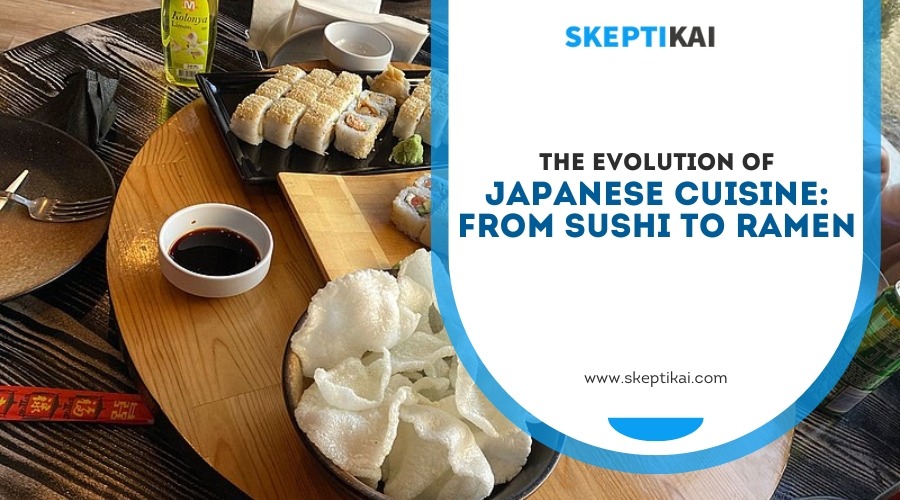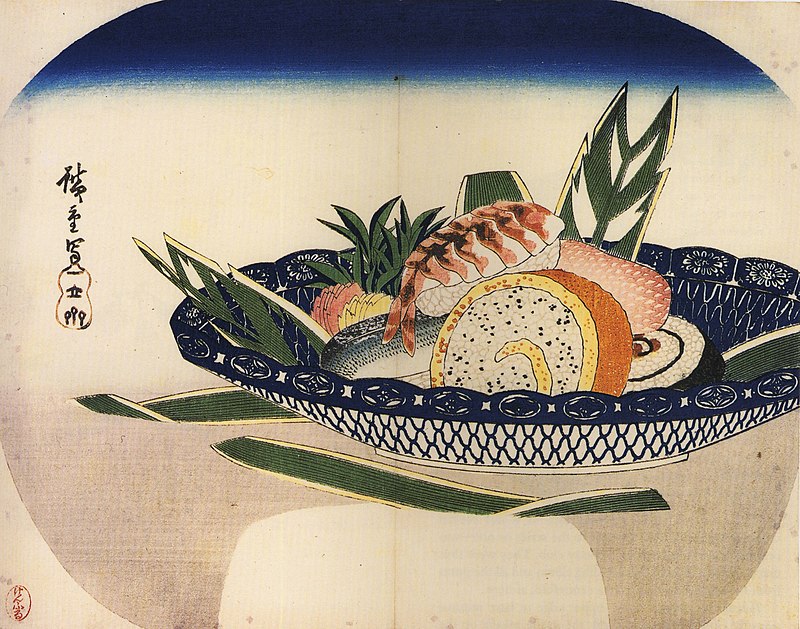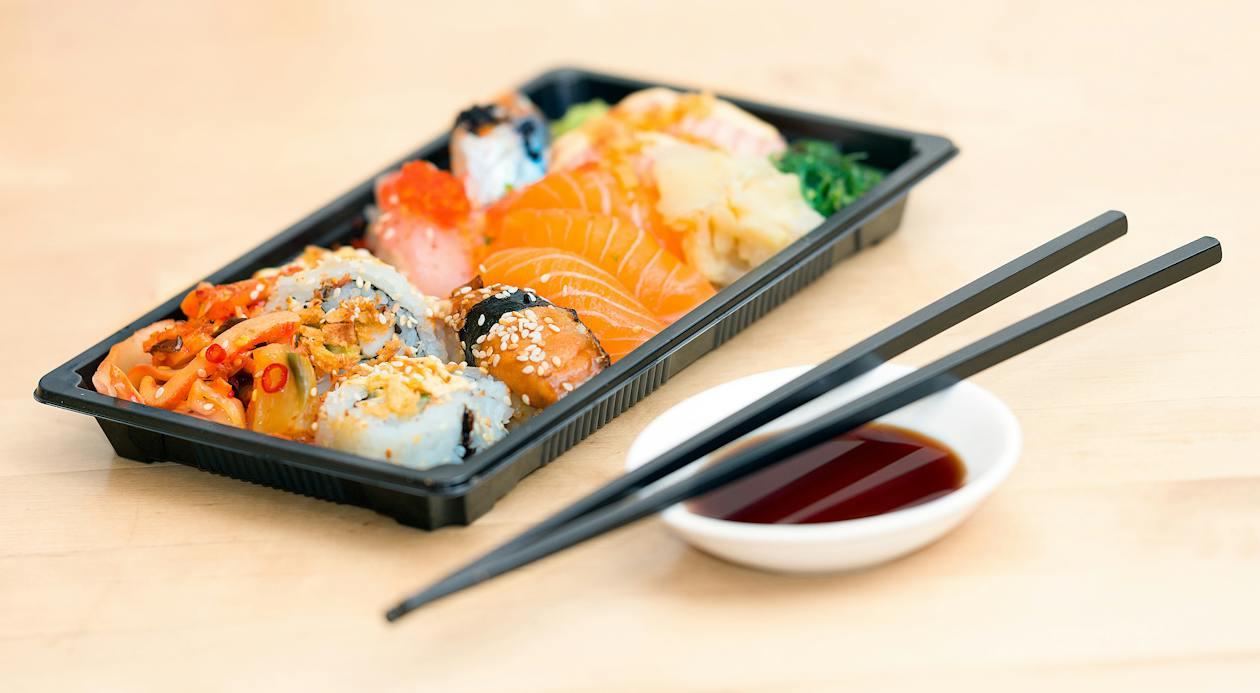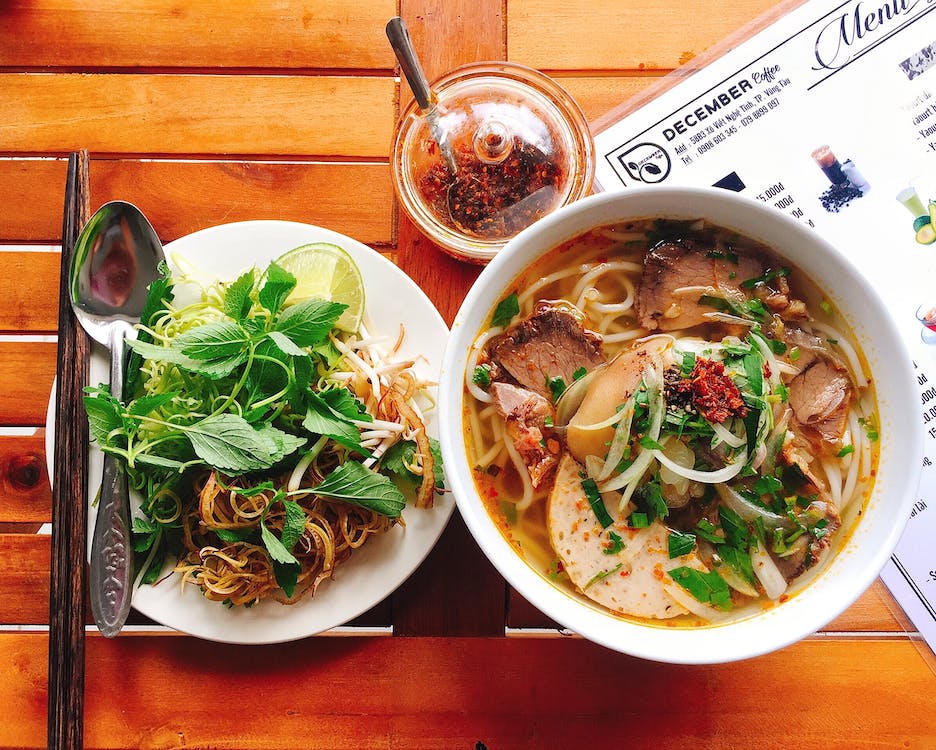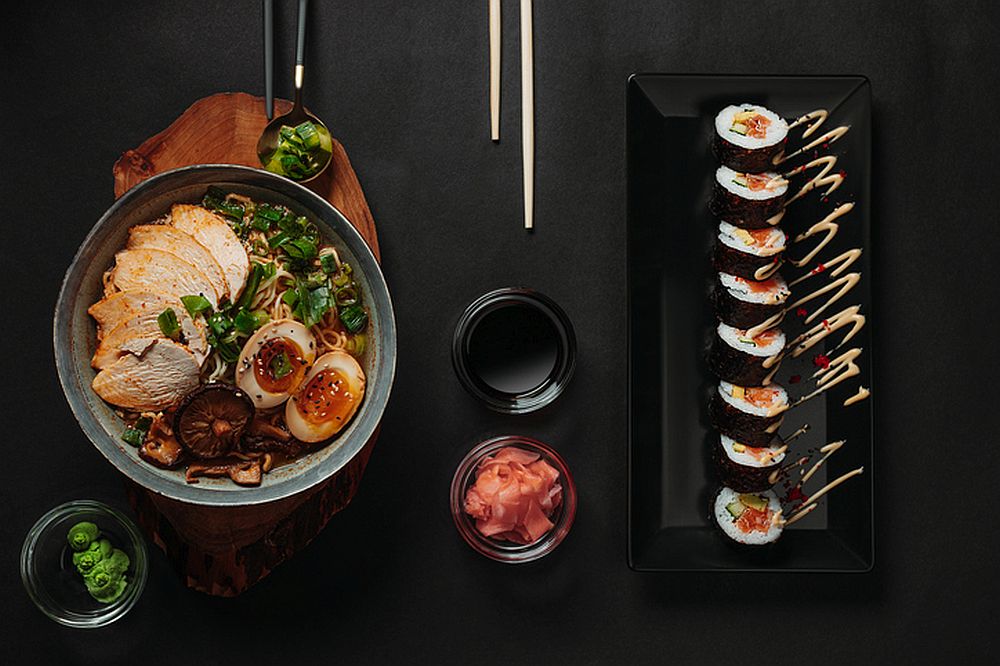While you might think Japanese cuisine hasn’t evolved much beyond its traditional staples, the journey from sushi to ramen tells a different story. You’ve likely savored sushi’s delicate balance of rice and fish, and perhaps you’ve indulged in the rich, savory depths of a ramen bowl. But have you ever considered how these dishes reflect centuries of culinary innovation and cultural exchange?
Starting with sushi’s ancient origins as a method of preserving fish, to ramen’s transformation from a Chinese import to a Japanese icon, there’s a fascinating narrative waiting to be explored. This evolution not only showcases the adaptability and creativity of Japanese cuisine but also offers a window into the country’s history.
So, let’s embark on this journey together, and you might discover more than just flavors and recipes.
The Origins of Sushi
Tracing its roots back to ancient China, sushi began as a method of preserving fish with fermented rice. This technique, known as narezushi, was a practical solution that allowed for the extended storage of seafood. However, as the concept journeyed to Japan, it underwent a significant transformation. The introduction of namanare, a faster fermentation process, marked the beginning of what you recognize today as sushi. This adaptation meant that the fish, still partially raw, was consumed with the rice, introducing a new flavor profile that was eagerly embraced.
As sushi continued to evolve, it transitioned from a simple preservation method to a culinary art form, especially with the involvement of itamae chefs. These skilled artisans refined sushi, elevating it from a convenient street food to a sophisticated dining experience. The development of modern refrigeration technology further revolutionized sushi, enabling the use of fresh, raw fish and turning sushi into a global culinary sensation. This shift not only preserved the delicate flavors of the seafood but also introduced sushi to the world stage, where it was celebrated for its unique blend of taste, texture, and presentation.
Sushi’s Global Journey
Sushi’s remarkable journey from its humble beginnings to a global culinary phenomenon demonstrates how a simple dish can transcend cultural boundaries. Originating in ancient China, sushi traveled across Asia as street food before making its mark in Japan in the 8th century. Here, the introduction of namanare significantly reduced the fermentation process, setting the stage for raw fish sushi to captivate the Japanese palate.
Modern refrigeration technology played a pivotal role in sushi’s international voyage, ensuring the preservation of raw fish and enabling its global spread beyond Japan. Today, sushi stands as a popular international dish, cherished for its unique blend of flavors, textures, and artful presentation. This culinary icon not only represents Japanese cuisine but also showcases the power of innovation in food preservation and preparation.
To grasp the essence of sushi’s global journey, consider these key points:
- The evolution from namanare to modern sushi highlights the adaptation over centuries.
- Modern refrigeration has been crucial in maintaining the freshness and safety of raw fish.
- Sushi’s appeal lies in its combination of tastes, textures, and visual appeal, making it a beloved dish worldwide.
The Birth of Ramen
While we’ve explored sushi’s global impact, let’s now turn our attention to another Japanese culinary marvel, ramen, which also boasts a rich history and worldwide acclaim. Originating from China in the late 19th or early 20th century, ramen has become a beloved Japanese noodle soup, adored for its savory broth and tender noodles. The journey of ramen within Japan began earnestly when the first ramen shop opened in Tokyo in 1910, laying the foundation for its widespread popularity across the nation.
Ramen, traditionally consisting of wheat noodles in a flavorful broth, often made with chicken or pork stock, has evolved into a food staple not just in Japan but around the world. It’s the regional variations that truly showcase the depth of this dish. From miso ramen to soy sauce-based ramen and Hakata ramen, each offers a unique taste profile, reflecting the local preferences and ingredients available.
The 1950s marked a turning point with the invention of instant ramen, catapulting this traditional dish to global fame. Today, with around 100 billion servings consumed yearly, ramen’s legacy as a versatile and deeply satisfying food continues to grow, highlighting its indispensable role in Japanese cuisine.
Ramen Reinvented
Ramen’s evolution doesn’t stop at its regional variations; chefs around the world are now reinventing this classic dish with innovative ingredients and techniques. This iconic noodle soup, which originated in China in the late 19th century and made its way to Japan, where the first ramen shop opened in Tokyo in 1910, has gone through a remarkable transformation. Initially a simple dish, ramen has evolved into a culinary phenomenon, celebrated for its rich flavors and diverse regional styles.
Now, it’s not just about the traditional toppings like pork, eggs, and fish cakes. Chefs are pushing the boundaries to create something extraordinary, making ramen more popular than ever. Here are three inventive twists that have caught the attention of foodies worldwide:
- Vegetarian and vegan ramen that use rich, savory broths made from seaweed or mushrooms, proving that you don’t need meat to achieve that umami flavor.
- Fusion ramen combines elements from different cuisines, such as Mexican or Italian, introducing an exciting range of flavors to the ramen bowl.
- Locally sourced ingredients elevate the dish by incorporating fresh, regional produce and proteins, tailoring the ramen experience to reflect local tastes and seasons.
These innovations show that ramen’s evolution is far from over, with chefs continuously finding new ways to honor and reinterpret this beloved noodle soup.
Sushi and Ramen Today
Today, both sushi and ramen stand as pillars of Japanese cuisine, captivating food enthusiasts worldwide with their rich history and innovative variations. Sushi has become a global phenomenon, celebrated for its fresh seafood and meticulous preparation. From the delicate slices of nigiri to the creative rolls of maki and temaki, the art of sushi offers a taste of Japan’s culinary finesse on a global scale.
Ramen, on the other hand, has transformed into a nuanced noodle soup, with rich broth bases ranging from chicken to pork. It’s a dish that invites customization, allowing you to add your choice of toppings to create a meal that speaks to your palate. The regional variations like miso and Hakata ramen showcase the diversity within this beloved staple, making ramen a canvas for culinary creativity.
In Tokyo, you’ll find world-class sushi chefs working with the freshest seafood, while Osaka is famed for its hakozushi, a distinctive layered sushi. The advent of modern refrigeration has propelled raw fish sushi to worldwide popularity, with over 100 billion servings of instant ramen enjoyed globally each year. Both sushi and ramen remain beloved staples, embodying a harmonious blend of tradition and innovation.
Conclusion
You’ve journeyed through the evolution of Japanese cuisine, from the traditional art of sushi, born from ancient preservation techniques, to the comforting bowls of ramen, a testament to cultural fusion and innovation. These dishes, each with their unique origins and adaptations, not only highlight Japan’s rich culinary heritage but also reflect its ongoing dialogue with global influences.
Today, sushi and ramen continue to captivate food lovers worldwide, embodying the essence of Japanese culture in every bite.
